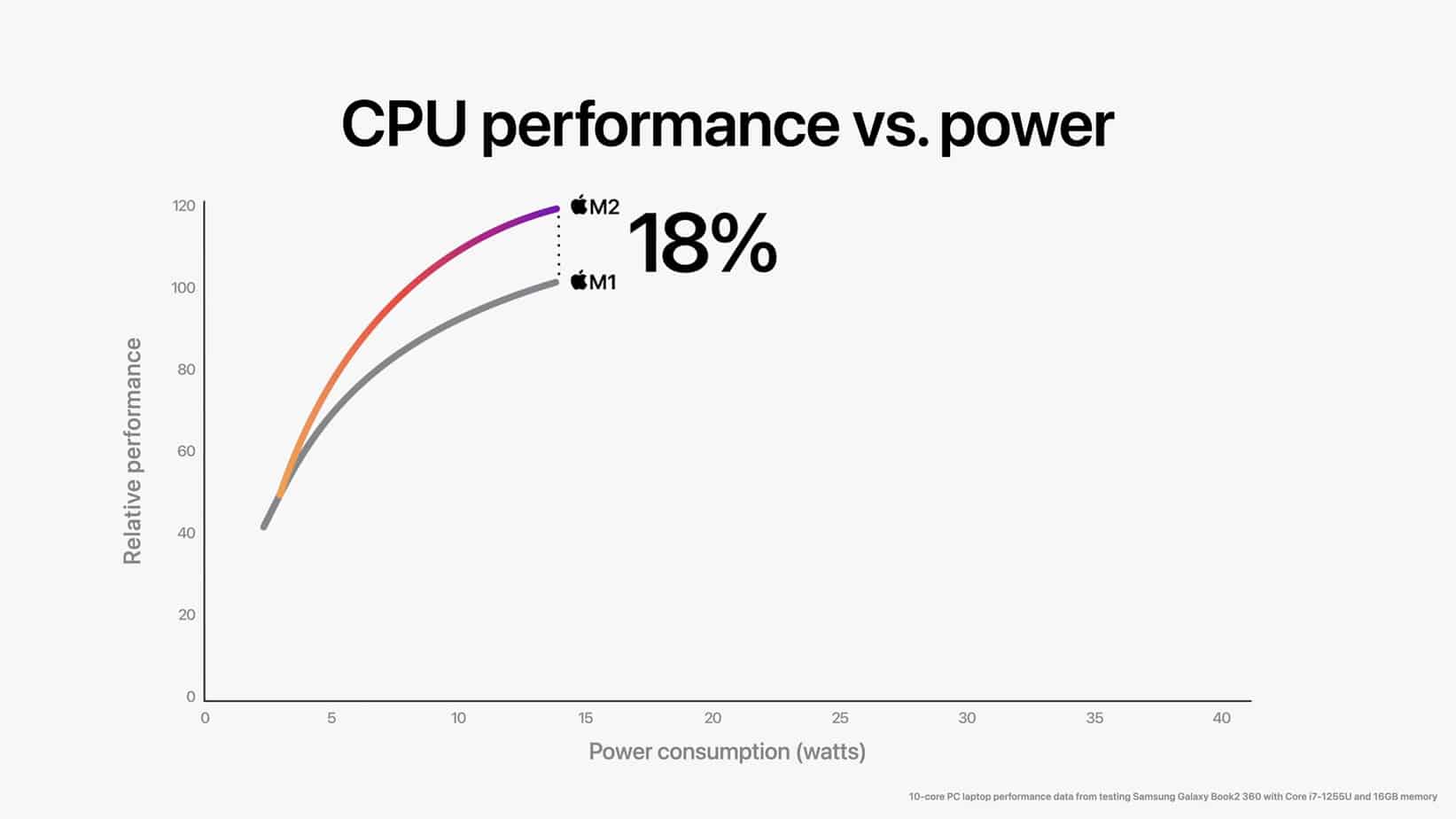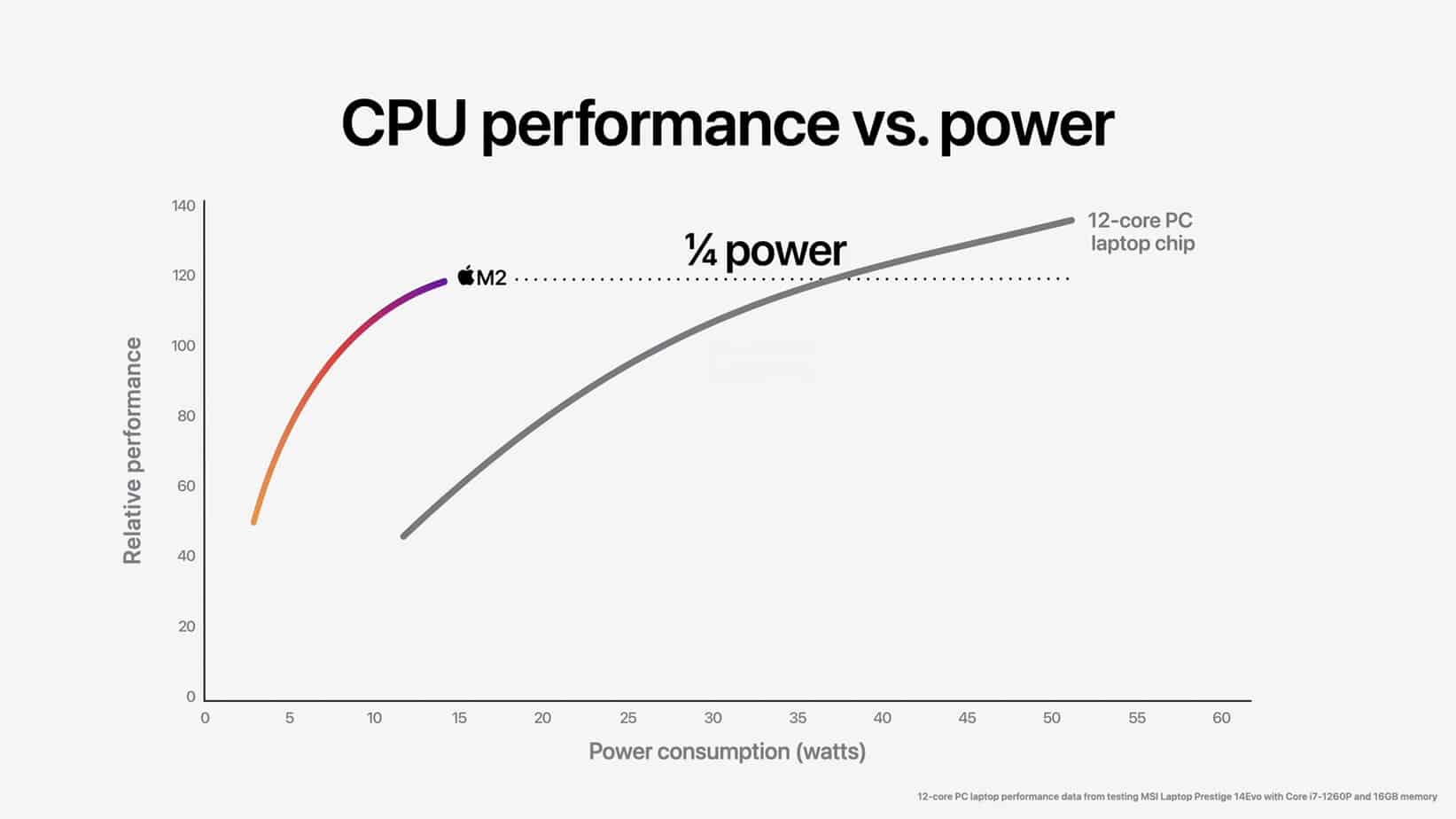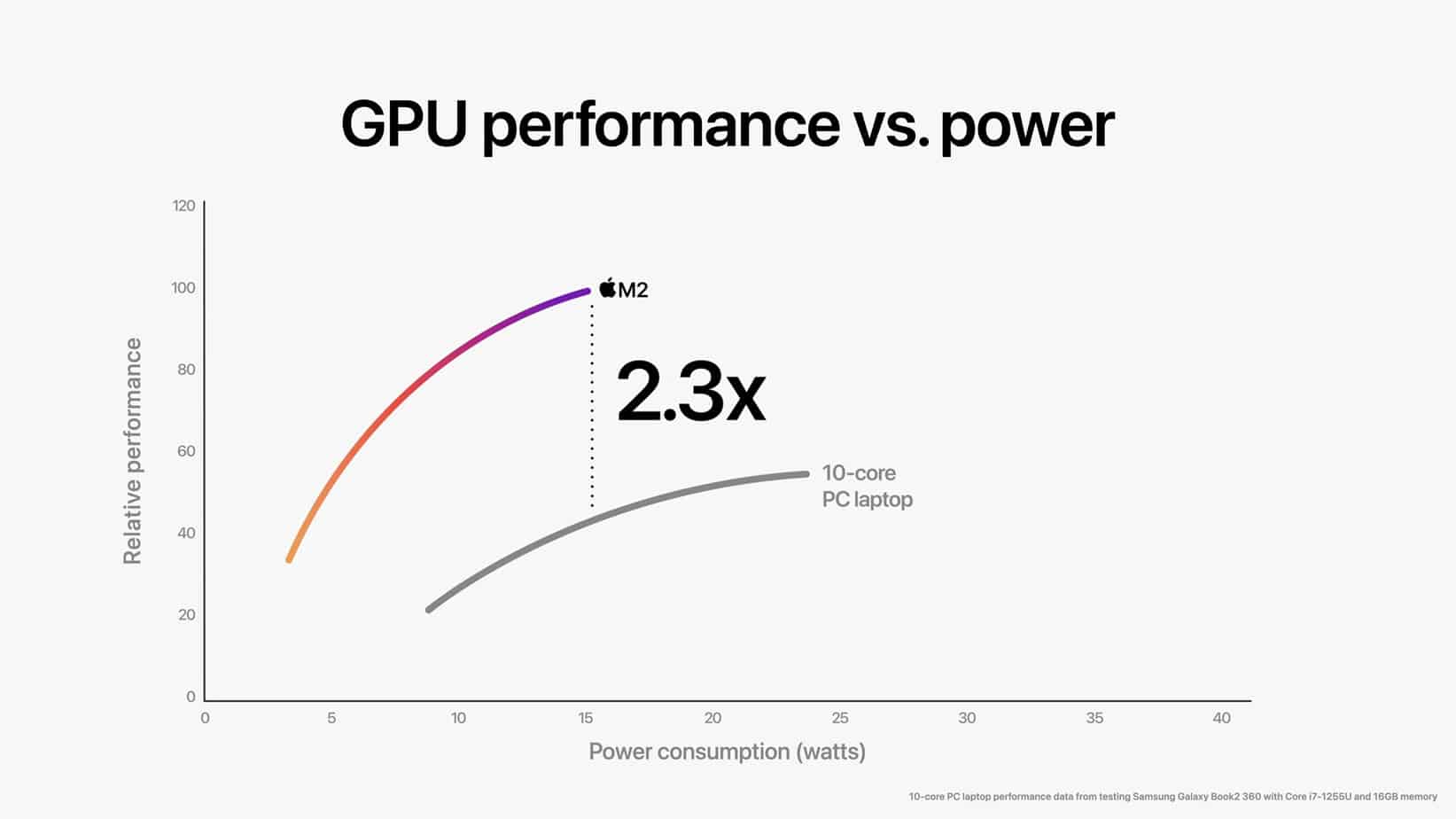Last Updated on
The first Apple Silicon Mac processor, the M1, was released to great acclaim in November 2020. Since then we’ve had the M1 Pro, M1 Max, and M1 Ultra, each more powerful than the last. Now Apple’s Silicon M2 is here.
The M2 chip debuts with the 2022 MacBook Air and 13-inch MacBook Pro. It’s possible it will feature in the iPad Pro 2022 lineup too.
What is the M2 chip?
Like the M1 series, the M2 is an entire system on a chip. The CPU, GPU, and memory are all integrated into the same chip. That chip boasts a 16-core Neural Engine, an image signal processor, and controllers for PCIe and USB 4 with Thunderbolt support. It’s also made using a five-nanometer process, making it very thin.

Design advances
The M2 offers exceptional performance at very low power consumption. A combination of keeping everything on one chip, and the close proximity of components offered by the five-nanometer process, improves power efficiency by giving data signals a shorter distance to travel.
Needless to say, considerable advances have been made over the original M1 chip. The M2 has over 20 billion transistors, which is 25 percent more than the M1. The memory controller delivers 100GB per second of unified memory bandwidth, which is 50 percent up on M1.
Plus, the M2 can support up to 24GB of fast unified memory. The original M1 chip can only be configured with up to 16GB.






Apple M2 cores
The M2’s CPU offers eight cores. Four of these are high-performance cores, which come into use when carrying out processor-intensive tasks such as video editing or playing a video game.
The other four are high-efficiency cores. These don’t offer as much computing power, but they use less energy and therefore save battery life. They’re used when you’re surfing the web, writing a letter, or carrying out other tasks that are light on the processor. The M2’s integrated graphics processor offers ten cores, which is two more than the M1’s eight.
Neural Engine
Another component that’s been improved is the Neural Engine. This is used for machine learning computations and artificial intelligence tasks. It was first used for Apple’s own proprietary applications such as Face ID and animated emojis, but it’s open to third-party developers to use too.
It’s faster and more energy-efficient than the CPU and GPU, and it powers tasks such as video analysis, voice recognition, image processing, and more. The M2’s Neural Engine is capable of up to 15.8 trillion operations per second, which is a 40 percent improvement on the M1.
In tests conducted by Apple, the M2 chip offered an 18 percent improved performance over the M1, while consuming exactly the same amount of power.
Additionally, in comparison to a leading ten-core PC laptop processor, the M2 doubled its performance, while again consuming the same amount of power. Opt for a heftier 12-core PC laptop chip, and the M2 can reach almost 90 percent of the PC’s peak performance while using a mere 25 percent of its power!






M2 Graphics
The M2’s graphics processor also puts in an excellent show when compared to its rivals. Again, in Apple-conducted tests, at maximum power, the M2 delivers 35 percent more graphics power than the M1.
Compared to a ten-core PC laptop’s integrated graphics, it’s 2.3 times as quick while consuming the same power. It can also match this PC’s peak performance while using only a fifth of the energy.
It’s really amazing how much the M2 can achieve while using very little power – conserving battery life without reducing performance.
Of course, the M2’s reduced energy consumption has another benefit. With very little power being used the computer doesn’t get as hot, so the cooling fans come into play far less often and for less time. This means an M2 Mac is very quiet.
If your current computer frequently sounds like an aircraft taking off when carrying out processor-intensive tasks, maybe it’s time to upgrade. The first Macs with the M2 chip are out now.
Macs With the M2 Chip
The 2022 MacBook Air is a complete redesign, boasting even greater portability and performance.
- MacBook Air 2022 (M2) – from $1,199 at Best Buy
The latest 13-inch MacBook Pro also has an M2, but is otherwise unchanged in its specs.
According to Johny Srouji, Apple’s senior vice president of Hardware Technologies, “M2 starts the second generation of M-series chips and goes beyond the remarkable features of M1.”
“With our relentless focus on power-efficient performance, M2 delivers a faster CPU, GPU, and Neural Engine. And along with higher memory bandwidth and new capabilities like ProRes acceleration, M2 continues the tremendous pace of innovation in Apple silicon for the Mac.”
It certainly looks as though the next generation of Apple’s system-on-a-chip will live up to expectations.



